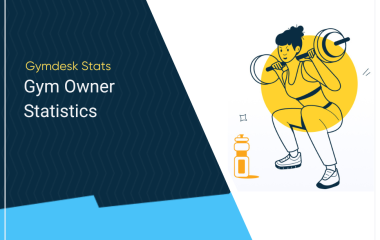Are summer camps worth it?
Let’s say you decide to spend the time and money needed to create a sports summer camp for campers. Would that be a great way to generate more revenue for your business?
The numbers don’t lie.
In 2019, the Youth Sports Summer Camp industry was a $19.2 billion market in the United States, rivaling the NFL’s $15 billion. The sports summer camp market is projected to hit $77.6 billion globally by 2026.
What does this mean for you?
With the right marketing plan, you can attract more campers and generate more revenue for your business. Today, we’ll look at 10 sports summer camp marketing ideas you can use to increase your cash flow.
Getting Started: Sports Camp Marketing Strategies
You need a blueprint.
A marketing plan allows you to look forward to the outcomes you want, and reason backward, working out the specific steps you’ll need to take to get there. As it turns out, that’s the first step.
Step #01. Define the Marketing Strategy for your Summer Camp
Your marketing strategy needs to appeal to two audiences: (a.) parents, you know, the people with the money, and (b.) students who are interested in the training you’re offering. There’s some nuance to this as your marketing content needs to address four common scenarios.
- Kids who are eager to participate. Their parents agree and sign them up.
- Kids who are eager to participate. Parents are skeptical and evaluating your offer.
- Parents who want their kids to participate. Kids are less interested or completely disinterested.
- Parents and kids who aren’t initially interested but are encouraged to participate by a third party.
Your marketing strategy should account for this by achieving specific goals.
- Educate kids and parents, showing them why they want your summer camp.
- Show kids and parents why your camp is different.
- Set expectations, showing them what they’ll experience in your camp.
- Define/outline the ways your camp makes them better.
Once you have this information, you’ll want to create a content plan that answers the following questions.
- Define your ideal camper. Who is your sports camp for?
- What specifically do kids want from us? What do their parents want from us?
- What are the behavioral drivers that shape their decisions (e.g., desires, goals, fears, problems, etc.)
- What do we want from our ideal camper?
Once you have this, you’re ready for the next step. Creating content in the right place, at the right time.
Where’s the right place?
Anywhere your ideal camper (and their parents) spend their time. Where do your campers spend their time? On Google, searching for educational content, events, or camps. On YouTube, looking for technique breakdowns, stretching routines, or instructional content. On Instagram, interacting with athletes, organizations, and events.
As a general theme, you want to be ever-present. If your customers are there, you need to be as well. A good foundation is making sure that you’re present on search, social, and video platforms.
Step #02: 10x Content Marketing and Syndication
What do you need to create a successful content marketing campaign?
Yeah, I know, I know.
The obvious answer is content; I’m asking about the specifics of that. Do you know what kind of content you’ll need to produce consistently amazing content over time?
If not, you’re in luck.
If you’re going to create a successful content marketing campaign to promote your summer camp, you’re going to need the following:
- Content development kits: This includes topical clusters, keyword clusters and groups, the co-occurring terms, the results campers expect when they use specific keywords, and the list of pages you’ll need to satisfy the needs of a specific topical cluster. If you’re doing it right, you’re treating Google like another person you need to take care of. This means your content needs to take care of (a.) the parents, (b.) your campers, and (c.) Google. The better you are at optimizing your campaigns around these three groups, the easier it is to generate traffic that generates revenue.
- Content briefs: These briefs provide employees, freelancers, or contractors with the specific information they need to complete their steps in the process. For example, your videographer won’t need access to your topic or content clusters, but they definitely need to know who they’re filming video content for.
- Editorial calendars: This blueprint provides everyone involved in your camp with a high-level view of the content that needs to be created. What you’ll create, when you’ll create it, who it’s for, the call-to-action for each content piece, and how they fit together. This editorial calendar will help your team account for changes over time. It’s important that your editorial calendar is created with flexibility in mind. You should be able to change details in your plan on an as-needed basis without breaking everything.
- Technical plans: This step outlines the technical details of your summer camp marketing campaign. If you’re creating a new microsite, this could include the taxonomy, tagging structure, linking structures, information architecture, navigation structure, etc. This plan guides your technical, design, and development teams, showing them how your site (and content) should be built, structured, and maintained. But here’s the most important point: it’s still data-driven and oriented around your campers, their parents, and Google.
While each of these is important, you’ll want to pay special attention to your content briefs. The content brief is a set of instructions that documents what you want from each content piece. Your briefs should outline:
- Content goals (e.g., list building, branding, conversions, registrations, etc.)
- The specific group you’re targeting (kids/Google, parents/Google)
- Keywords and keyword clusters to use/avoid
- The topics, ideas, and key points that must be covered
- The questions that need to be answered
- Structured data and data sources that can or should be used
- Tone, voice, and style requirements (consistent with each persona)
- Requirements around media and assets (i.e., use these keywords with images)
- Schema markup (e.g., how-to, product, reviews, software, and FAQ) and annotations
- Brand guide and brand requirements
- These briefs are instructions, but they also function as a checklist.
If your content fails to meet the requirements listed in your content brief, you flag that piece. Your content brief documents what you want, but it’s also used as a kind of performance checklist for the content you’re creating.
Now you’re ready to create content!
If you’ve done your homework so far, you already know which content pieces need to be created.
- Daily camp activities
- Highlight reels from previous camps
- Success stories
- Education showing why your camp is unique
- Drills and educational snippets
- Important how-tos (e.g., avoiding injury, dehydration, exhaustion, etc.)
- Important PSAs for parents (e.g., staff introductions, supplies needed, legalities, recovery, etc.)
- Content with strong emotional valence (awe, excitement, curiosity, etc.)
Here’s a look at a few examples:
Camp uniqueness
Staff introductions
Local search rankings
Lead Magnets
If you’re creating content, you’ll need to be mindful of the nuances involved with your marketing. For example, if you post all of the same exact content on your Google Business, YouTube, Instagram, Facebook, and X profiles, your audience is (much) less inclined to follow you across all of your platforms.
What about the other types of content?
- Online reviews and testimonials
- Local search content via your Google Business profile
- Member spotlight
- Location-specific content (e.g., maps, directions, phone, etc.)
- Facility tours
- Important forms and docs
- News and updates
Your content needs to find the overlap between (a.) campers, (b.) parents, and (c.) Google. Each of the content types I’ve mentioned above can satisfy the requirements of each group. That’s because their desires are all aligned with each other.
“But Andrew, you said I could create 10x content!”
I did.
When it comes to content marketing, there are five ways to create 10x content. This is hard-to-copy content that communicates authority (rather than credentials) and generates considerably greater amounts of traffic, revenue, and conversions.
- Depth: This content is deep, thorough, and thought out. It answers your audience’s questions at a level that is difficult to compete with.
- Design: Beautifully designed content that’s visually appealing, easy to digest, clear, and persuasive.
- Drama: This content has strong emotional valence, automatically triggering an emotional response in those who consume your content.
- Data: Your content relies on hard data—research studies, surveys, statistics, factoids, metrics, and original data that leads viewers/readers to an inescapable conclusion.
- Degree: You produce a large volume of high-quality content that’s published consistently at a pace that’s very difficult to keep up with. If competitors wonder how you do it or assume it’s AI, you’re on target.
Pretty straightforward, right?
Okay, you’ve created your 10x content. How do you get value from it? You share it! If it’s long-form content, create excerpts—reels, stories, or shorts that you can use to bring people back to your medium or long-form content. Share unique short-form content on specific platforms. Remember, you’re trying to avoid sharing all of the same content on all of your platforms.
Once you’ve gained some traction, you can begin the syndication process.
Reach out to relevant sources and pitch them. Ask them if they need content for their audience (they do). Set the terms for your content sharing partnership, add metrics and tracking, and then work from there! Just make sure you retain the rights to your content and that all mutually beneficial transactions are handled on your end.
Step #03: Digital Marketing Campaigns
Before promoting your summer camp, you’ll want to define a few details. When promoting your sports summer camp, what are the goals you have in mind?
- Traffic: A steady supply of leads from the marketing channels we discussed above.
- Customers: These are the parents who have signed their kids up for your camp.
- Cash flow: The revenue coming into (and going out of) your company.
- Profit: The cash left after expenses, taxes, insurance, etc.
- Growth: An increase in top-line or bottom-line growth over a set period (e.g., year-over-year).
You can pursue each of these goals, but you’ll need to determine which content pieces are responsible for what. Generally speaking, it’s a smart idea for content pieces to focus on a single goal.
This enables you to set the tone for your marketing content.
Paid advertising campaigns
I shared this concept, known as 60-30-10, in a previous post.
Here’s how it works.
- Spend 10% of your budget on Cold traffic. These are the campers and parents who have never heard of your summer camp. You share helpful information, give them a visual tour, something they value.
- Spent 30% of your budget on Warm traffic. These are the campers and parents who are familiar with your summer camp, and they’re interested enough to engage with you. Kids and parents in this category are more likely than cold traffic, to turn into customers.
- Spend 60% of your budget on Hot traffic. These are the people who have opted in to your email list, requested directions to your camp, liked, followed, or subscribed to your content. But, more importantly, they’ve shown clear purchase intent.
When you use paid advertising to promote your summer camp, you’ll want to use the following elements on your landing pages:
- Maintain ad scent: Ad scent is the consistency between your ad and the landing page it sends you to. If you use an ad of a specific camper in your ad, use that image of your camper on your landing page. If you use specific keywords or copy in your ad, use the same copy on your landing page.
- Create an irresistible offer: Your irresistible offer should be built around a specific desire, goal, fear, or problem. If you’ve openly discussed your customer’s motivators with them, you know what they want. An irresistible offer is appealing to your customer, clear, exclusive, and timed.
- Create urgency triggers: These triggers give your customers (campers and parents) a compelling reason to take action quickly. Tactics include—bonuses, loss aversion timers, contests, waitlists, VIP/invite-only, and bundled opt-ins. Urgency triggers can be used to increase opt-ins, registrations, and purchases.
- Authority boosters: Notice I didn’t say credentials—I used the word authority. Credentials are extrinsic, whereas authority is intrinsic; it comes from lived experience. Have camp counselors played at the semi-pro or professional level? Authority. Can camp counselors perform the way campers want to? Authority. There are hundreds of ways you can boost authority. Share the authority signals you already have in your marketing.
- Risk-reversals: These are promises made by the seller (you) to take on the risks of doing business. If your camp isn’t well known, risk reversals are a great way to boost customer confidence. However, if your business has high status and authority, this isn’t necessary.
If you’re following this approach with your paid ads, you’ll find you’re able to hit the goals you’ve set for your campaign. Apply these strategies on each of the paid advertising platforms (Google, Facebook, Instagram, YouTube, and second and third-tier ad platforms) you’re using.
Email Marketing Campaigns
The best email marketers build relationships with their audience over time. When it comes to your email marketing campaigns, there are three approaches.
- Entertainment: Content that’s specifically designed to amuse and delight campers and parents.
- Education: clear lessons that teach campers how to achieve a specific result.
- Edutainment: Mixing education and entertainment.
The edutainment approach can work, but it’s really difficult. That’s because it’s tough to get people who expect entertainment to pay for education and vice versa.
Here’s why.
Customers who value education want more education from you. People who value entertainment want more entertainment from you.
The easier route?
Start with education, the content track (education) that leads predictably to revenue.
Once you have that, you’ll need to define your email phases. Every email you send to your campers or their parents should fit into one of these five phases.
- Indoctrination: You introduce campers and parents to your summer camp, set expectations, create rapport, and build excitement.
- Engagement: You chat with campers and parents about their desires, goals, fears, and problems. After you introduce them to a relevant product and service (e.g., camp registration), you ask for the sale.
- Ascension: You welcome new campers and parents, and you invite them to purchase a relevant product or service from you again.
- Segmentation: In this phase, you determine what your campers and parents want to learn from you and what they want to buy next.
- Re-engagement: This phase is all about reigniting a cold relationship. You’re trying to recover a relationship that’s been lost or dormant.
This would be great if I knew how to create emails that actually work.
There’s an easy way to figure that out.
You use broadcast emails and autoresponder sequences to figure out what works.
Broadcast emails are single-use, one-time messages that are sent when you click “send.” You can use broadcast emails to identify the factors that have the greatest impact on your summer camp revenue.
You can test your message:
- Call-to-action
- Frequency
- Landing pages
- Offer
- Personalization
- Segments
- Sender names (personal vs. company)
- Timing
- Subject lines
- Visual elements
- Wording
Then, once you’ve figured out which content pieces your customers respond to, you can turn them into automated messages that are sent out automatically on a schedule as part of your autoresponder sequence. Use broadcast emails to send newsletters, enrollment updates, discounts, and testimonials.
Step #04: Increasing Revenue with Discounts and Incentives
Remember the urgency triggers I mentioned earlier?
Discounts and incentives are an important part of that. If you’re going to use discounts and incentives to promote your summer camp, you’ll want to do it carefully. Don’t train your campers (and their parents) to game the system and wait for discounts.
Use them carefully.
These tactics are great ways to train your customers. If the value you provide is clear, relevant, and appears out of nowhere, they’ll learn to pay close attention to avoid missing out.
It’s an excellent tactic that helps to boost registrations across the board. Here are a few ways you can increase revenue with discounts and incentives. Here are a few tools in the discount and incentives toolkit.
- Discounts: Register by [date] for a 25% discount!
- Bonuses: Campers who register by [date] are automatically added to our session with [athlete].
- Takeaways: Only [3] hoodies in this year’s batch. Get your [product] now before it’s gone.
- Loss aversion timer: This [bonus] is free until [date] or price goes up in [2 days, 12 hrs, 41 min.].
- Contest: The first 50 campers to pass this test win a [list prize here].
- Invite/vip only: The first 50 campers will receive these free [products, bonuses, freebies] with their order.
- Join the waitlist: Register for summer camp and you’ll be added to the waitlist for our [bonus/incentive].
- Bundled opt-in: Take our quiz and you’ll receive this [bonus or incentive] free with your registration.
- Referral bonus: Refer-a-friend, earn a discount.
You can use a variety of discounts and incentives. With the right urgency triggers, you can encourage families to pre-register and secure their spot in your summer camp.
Step #05: Engaging Current Campers
What’s the best way to engage with campers?
If you’ve read this far, you already know the answer to this question—set expectations, meet expectations, set expectations, meet expectations. Start small, then work from there. Kids know which counselors are genuinely interested in them and which ones are not.
Start there.
Build and develop consistent marketing habits, reaching out to your campers over time. If you’re setting and meeting expectations, you’ll find it’s easier to keep campers engaged and interested throughout the off-season. Use healthy communication strategies to maintain a strong relationship between your camp and camp families.
Use the content marketing strategies I’ve mentioned above to keep families involved.
Step #06: Sell Branded Merchandise
Campers want merch.
If your summer camp has authority, status, and a good reputation, families want to buy your merch. Your merch is a signal—it’s a tangible representation of the intangible benefits that families receive from your summer camp. Think about the attendees of a basketball camp with LeBron James or Stephen Curry.
Do you think they’d want to be able to remember that?
Of course they would.
It’s the same for your camp. If your campers are engaged and happy with their experience at your camp, they’re much more likely to be interested in your merch. It’s a tangible representation of the things you stand for. Done well, it’s free advertising for your company.
Take it a step further by adding QR codes.
You can add QR codes to your designs, sending those who are interested to a landing page. Create a cold offer that you can use to warm up these cold visitors (e.g., a free gift or resource). Offer warm visitors a lead magnet that solves a specific problem or improves their performance. Offer hot visitors discounts or incentives if they purchase pre-sale tickets for your next camp or event.
Step #07: Partner with Schools and Community Organizations
Community partnerships are a straightforward way to fill your camps.
There’s an easy way to do it.
You use the Peter Thiel Value Formula. Here’s how it goes.
- Create X dollars of value.
- Capture Y percent of X.
So, how do you use this to market your summer camp?
- Find the social media and review profiles that have the greatest impact on your summer camp (e.g., Yelp, TripAdvisor, Google Reviews, etc.).
- Build a strong review portfolio by requesting reviews from all of your families (point families to your Yelp profile, but don’t ask for reviews). This lays the groundwork for your partnerships, showing that you’re trustworthy, dependable, and a great camp to partner with.
- Pitch schools and community organizations. Remember our value formula above? Give schools and community organizations something of value, then capture a percentage of that value. Offer free day and weekend passes to schools and organizations. Give specific clubs or organizations exclusive access on specific days or at specific times. Do your best to wow each family.
- Require email, text, or social media opt-ins to redeem the incentives and rewards you’re offering. Use this to build your list. Then, use the strategies and tactics I mentioned above in the email section to generate sales and revenue when it’s time to pre-sell for camp!
- Request reviews from partnership participants and their families. Repeat steps 2 – 5.
Can you see what’s happening?
You’re using the value formula to attract and generate leads at low cost. The theme here is caring; your community partners want you to show their audience the same care, guidance, and protection they do. You’re asking them to take a big risk; your review portfolio is the spark that motivates them to take a chance with you. Your incentives/irresistible offer is the fire that motivates families to take action.
Step #08: Improve your Online Registration Process
Your website should be (a little) difficult to use.
Your website visitors aren’t being filtered. Your website visitors consist of:
- Bots that access your site for a specific purpose (Google updating their index, site scrapers harvesting email addresses, and contact info).
- Predators. Cybercriminals are searching for a vulnerability they can exploit. If they find one, they’ll use that opening to steal customer data and personal information.
- Competitors. Your competitors are comparing themselves to you and looking for something they can use to gain a competitive advantage over you.
- Unfits cover a broad category of visitors, including: salespeople who want to sell you something; media, PR reps, and/or journalists doing research on your business; and investors and influencers looking for information.
- Scammers are bad customers. They’re looking for a way to maximize what they take from you and minimize what they give to you.
- Customers. The website visitors you actually want, families who want to enroll their kids in your summer camp.
These groups are typically lumped together. They’re usually treated as one, uniform group, which they’re obviously not.
See where I’m going with this?
This is why you need visitor friction.
Friction is defined as “any psychological resistance to an element in the conversion process.” What does that mean in terms of visitor friction for a website? Friction sounds like something you should avoid. But it’s actually a useful tool you can use to improve your website usability in general and your online registration process, in particular.
Think of visitor friction like the volume dial on your radio.
- Turn the friction down to attract more of the families you want.
- Turn the friction up to repel more of the visitors you want.
There are hundreds of visitor friction elements like these. How are you supposed to find the ones you need? It’s actually pretty simple.
Look for decision points on your site.
Once you’ve found these decision points, adjust the visitor friction on your website accordingly, making things easier or more difficult for your visitors, depending on your goals.
Here are a few examples:
- Taking a mobile-first approach to make it easier for families to register.
- Long web forms = fewer responses. Short web forms = more unqualified responses.
- Multiple payment methods to accommodate families (e.g., credit cards, ACH, payment plans, subscriptions, etc.)
- Using space and formatting to create attractive and appealing content.
- Using code to hide your email addresses.
- Shopping carts that allow families to “checkout as guest.”
- Order/registration confirmation with important details (e.g., dates, times, payment confirmation, next steps)
The right traffic and a little bit of friction will produce the kind of visitor traffic you need: families searching for the best camp for their kids.
Use these Marketing Ideas to Promote your Summer Camp
You’ve invested the time and money needed to create an amazing sports summer camp for campers. Done well, it’s a fantastic way to generate revenue for your company and provide campers with an unforgettable experience.
The numbers don’t lie.
With the right marketing strategies, you will generate the volume of cash flow your business needs.
But it starts with a blueprint.
Look forward and reason backward, working out the specific steps you’ll need to take to get to your ideal outcome. With consistent effort and a clear focus, you’ll draw campers to the program that’s best for them. Yours.
 Gym Owner Statistics: The State of Gyms, Member Trends, and Usage Data
Gym Owner Statistics: The State of Gyms, Member Trends, and Usage Data




 EN (English)
EN (English)
 JA (日本語)
JA (日本語)